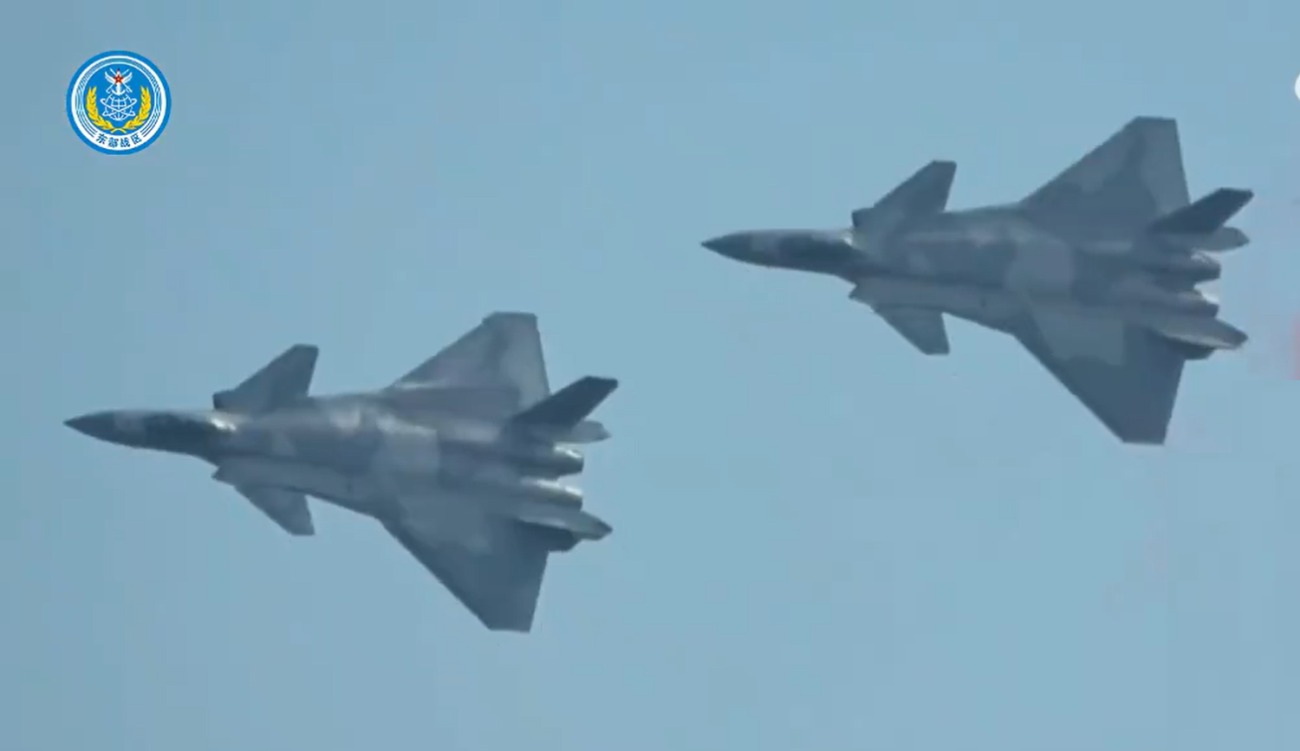China has developed a new material that it claims could render its aircraft virtually “invisible” to anti-stealth radar systems.
According to claims from Chinese media, the material, created by the National University of Defense Technology, is designed to absorb electromagnetic waves and convert them into heat, a process that may significantly reduce the aircraft’s radar visibility.
The new material is said to be able to absorb electromagnetic waves with wavelengths ranging from 2.3 feet to 0.6 feet, which covers the key frequencies of most anti-stealth radars, specifically the P-band and L-band.
Chinese researchers said that laboratory tests have shown the material’s ability to effectively absorb low-frequency electromagnetic waves from various angles, with a thickness no greater than two sheets of printing paper—an achievement considered impossible until now.
Anti-stealth radars typically emit long-wavelength electromagnetic signals, which are difficult for current stealth aircraft coatings to absorb effectively due to their thinness.
The report said that the new material could mark a breakthrough in overcoming this limitation, potentially offering stealth aircraft enhanced protection against radar detection.
The material is also described as lightweight, flexible, and easy to mass-produce, making it an attractive option for covering a range of military platforms. Chinese scientists believe this cost-effective material could evolve the production of stealth technologies for aircraft and other defense equipment.
This new material is based on metamaterials—structures engineered to interact with electromagnetic waves in unconventional ways. Metamaterials are known for their ability to absorb a wide range of frequencies and manipulate light and other waves at a microscopic level.
Researchers used an unidentified metal to create a circuit within the material. When hit by low-frequency electromagnetic waves, the circuit creates currents that are converted into heat and dissipated into the surrounding air.
This technique reportedly allows the technology to provide ultra-wideband stealth effects without relying on heavy and costly magnetic components.
While these claims are groundbreaking, independent verification is still required to assess the material’s real-world effectiveness. Nonetheless, the announcement reflects China’s continued push to refine its stealth capabilities and maintain a competitive edge in military aviation.
Stealth Technology And Metamaterials
Metamaterials have long fascinated scientific research and have captured the public’s imagination since 2006. That year, John Pendry, a physicist at Imperial College London, introduced the concept of creating a “Harry Potter-style” invisibility cloak using specially engineered materials.
Pendry’s research revealed how metamaterials could bend light so that objects effectively disappear from view. This idea sparked widespread interest and laid the foundation for further exploration of these materials’ potential applications.
Building on Pendry’s research, David Smith, a professor of electrical and computer engineering at Duke University, co-authored the study and later developed the first working version of an invisibility cloak.
Smith’s cloak did not render objects invisible to visible light, but it succeeded in making them invisible to microwaves—a crucial leap forward in the study of metamaterials.
Over the years, metamaterials have started to transition from laboratory experiments to real-world applications. Their ability to control electromagnetic waves has made them particularly useful in improving the performance of satellite antennas and sensors.
Although these uses may not generate the same media buzz as the idea of an invisibility shield, they signal that metamaterials are moving beyond theoretical research and into everyday technologies.

China, in particular, has become a leader in the field of metamaterials. The country currently holds the largest number of patents in the area, with universities and research agencies working diligently to refine these materials for use in military and civilian applications.
This includes the potential use of metamaterials to enhance aircraft stealth capabilities. In fact, Beijing has made headlines before with its metamaterial efforts.
In 2021, EurAsian Times reported that China had successfully tested metamaterial coatings on aircraft at a major military production base in Shenyang, Liaoning province, with claims that the technology could render aircraft invisible to anti-stealth radar systems.
Such developments align with China’s broader strategy to enhance the capabilities of its stealth aircraft, including the J-20 and the newer J-35, which are expected to play a major role in potential conflicts, especially in scenarios involving the US.
Meanwhile, in 2017, Lockheed Martin, the manufacturer of the US military’s F-22 and F-35 stealth fighters, also partnered with a Canadian firm specializing in lightweight metamaterials for solar-energy applications.
While metamaterials hold great promise, experts caution that they are not yet a revolutionary breakthrough. Some skepticism remains, particularly regarding the metamaterials being developed by Chinese researchers.
The research community is engaged in ongoing debate about the effectiveness of these materials. A researcher from the Chinese Academy of Sciences noted that there is no clear consensus on what defines a metamaterial, and many believe the products still have significant room for improvement.
Metamaterials are expected to continue evolving in the coming years, with applications in both the military and commercial sectors. However, their role in the development of stealth technology remains an area of intense competition and scrutiny as countries around the world race to refine and deploy these cutting-edge materials.
- Contact the author at ashishmichel(at)gmail.com
- Follow EurAsian Times on Google News




